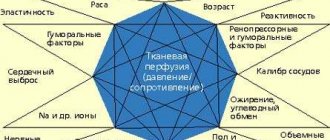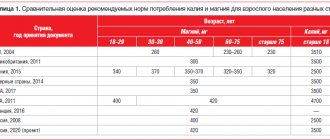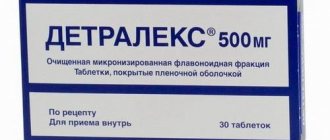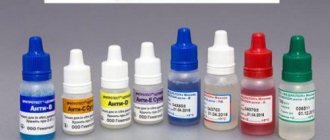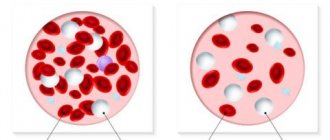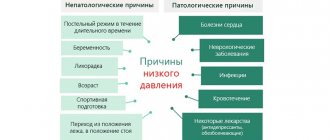Diets and various dietary restrictions lead to disruption of the natural intake of various micro- and macroelements, vitamins, and minerals from food. To normalize the functioning of the body, it is necessary to balance not only the calorie content, carbohydrate and protein composition of food, but also include foods rich in various elements in the diet. One of the most important minerals for humans is phosphorus P: it accounts for about 1% of the total human mass. What is phosphorus responsible for and how to compensate for its deficiency with food?
The role of phosphorus in the human body
Daily intake of phosphorus
Phosphorus-rich foods
The role of phosphorus in the human body
Everyone knows the importance of the role of calcium in the body, but calcium could not perform one of its main functions without a mineral such as phosphorus (together with calcium, phosphorus forms the basis of bone tissue). Approximately 85% of all phosphorus contained in the human body is in its crystalline form in bone tissue; in much smaller volumes it is found in the intercellular fluid in the form of inorganic phosphate, which is involved in energy transfer, and in soft tissues in the form of phosphorus esters. Phosphoric acid affects the processes of glycolysis, gluconeogenesis and fat metabolism.
A lack of phosphorus in the body is usually associated with excess calcium with a deficiency of proteins and vitamin D, metabolic disorders, diabetes, and abuse of carbonated and alcoholic drinks. This state of the body is characterized by loss of appetite, apathy, decreased mental activity and physical performance, and weight loss. Lack of phosphorus in the body can also lead to arthritis.
With a long-term predominance of meat, fish, and grain products in the diet, there may be an excessive intake of phosphorus into the human body. With an excess of phosphorus, the absorption of calcium from food is disrupted, calcium is “washed out” from the bones, and its salts are deposited in the kidneys and blood vessels.
Interpretation of results
In patients over 12 years of age, the macronutrient level should be in the range of 0.81-1.45 mmol per liter. For children of different age groups, their own reference values have been established. To correctly interpret the results, establish an accurate diagnosis and prescribe treatment, you must consult a doctor. The test is not intended for self-diagnosis.
Decreased macronutrient levels
there may be various reasons. These include, for example, uncontrolled use of a number of drugs, hypothyroidism, rickets, hyperparathyroidism, malnutrition, hypokalemia, and alcoholism. Decreased rates are also observed in patients with severe burns.
For children, the macronutrient norm is higher than for adults. Until the age of 12, maintaining its normal level is especially important. A deficiency can cause brittle bones and short stature.
Excess phosphorus
can be caused by kidney and liver diseases and a number of other pathologies. Over time, excess phosphates can be deposited in tissues, causing damage to internal organs.
It must be taken into account that eating food within 2-3 hours before taking blood leads to falsely low results. During the day, the concentration of macroelements in the blood is subject to fluctuations (in the evening it increases). In addition, phosphorus levels are affected by many medications. Therefore, the doctor who will interpret the test results must be informed about the use of medications prescribed by other specialists.
Daily intake of phosphorus
Today, excess phosphorus in the human body is more common than its deficiency. Phosphorus is an easily digestible mineral: up to 75% of phosphorus supplied with food is involved in metabolism. In addition to obvious sources, it enters our body along with various industrial food additives (E338, E340, etc.). Recommended phosphorus intakes vary greatly by age and are as follows:
| Age | Daily intake of phosphorus |
| Children 1 year of life | 300…500 mg |
| Preschoolers | 700…800 mg |
| Children 7…11 years old | 1100 mg |
| Children over 11 years old and teenagers | 1200 mg |
| Adults | 800 mg |
| Pregnant and lactating women | 1000 mg |
Phosphorus consumption has a cumulative effect.
Signs of phosphorus deficiency
If too small doses of phosphorus enter the body, the functions of the element are impaired. As a result, a person may experience a deterioration in general well-being, weakness, increased fatigue, paresthesia (unpleasant sensations) in different parts of the body, decreased mental productivity, decreased appetite, and mood disorders.
Immunity decreases, a person becomes more prone to various diseases. There is a predisposition to heart and liver diseases.
Phosphorus-rich foods
For clarity, we have collected products containing the maximum amount of phosphorus in one table.
| Food product | Phosphorus content per 100 g of product |
| Dried boletus | 1750 mg |
| Hemp seed | 1650 mg |
| Pumpkin seeds | 1233 mg |
| Wheat bran | 950 mg |
| Chia seeds | 860 mg |
| Oat bran | 734 mg |
| Sesame | 720 mg |
| Cocoa powder | 655 mg |
| Soybeans | 603 mg |
| Pine nut | 575 mg |
| Amaranth groats | 557 mg |
| Chicken egg yolk | 542 mg |
| Carp | 531 mg |
| Sunflower seeds | 530 mg |
| Beef liver | 497 mg |
| Pistachios | 490 mg |
| Red caviar | 490 mg |
| Beans | 480 mg |
| Chickpeas | 444 mg |
Phosphorus is found in many foods, but it is not absorbed in the same way. Phosphorus obtained from seafood and fish is absorbed by the body by 99%, from cereals and legumes - by 20%, from fruits - by 10%. This difference is due to the fact that phosphorus from foods of plant origin forms phytic compounds and is not released. In addition, there are not enough enzymes in the human intestine to break down phosphorus compounds obtained from grains and legumes.
Patient preparation rules
urine
Notes:
Any portion of urine, regardless of the time of day, is collected after toileting the external genitalia.
Deliver the biomaterial to the ML department of DILA within 2 hours after collecting the last portion. daily urine Notes:
Perform the first morning urination in the toilet. Collect all further daily urine, including the morning portion of the next day, into a container (important - the volume of the container must be sufficient for the expected amount of urine per day). During the entire collection period, keep biological material in a cool place, protected from light. After the collection is completed, determine the daily volume of collected urine, mix, pour 30-40 ml into a standard urine container and deliver to the ML DILA department within 2 hours after collecting the last portion.
You can add this study to your cart on this page
What does a diet for kidney disease include?
The primary task of therapeutic “renal” nutrition is strict control over the quantity and quality of daily protein consumed. With an unbalanced protein diet, a variety of complications can develop. The products of their transformation in the body are toxic and sharply increase the load on the kidneys. Therefore, high dietary protein may accelerate the rate of progression of CKD. On the contrary, adequate protein intake can significantly slow the rate of development of this condition.
When drawing up a diet menu for kidney disease, the patient’s age and weight, as well as the stage of CKD, are taken into account. The required daily amount of protein is calculated individually.
A diet for the kidneys also includes limiting the intake of phosphorus, potassium and sodium, and carefully monitoring the total volume of fluid consumed. It is also necessary to monitor the total caloric content of food so that the body of a patient with chronic kidney disease receives a sufficient amount of energy.
It is impossible to create a detailed diet menu for kidney disease for several years in advance. Therefore, the most important task in the management of patients with reduced renal function is their education. A nutritionist and attending physician carry out educational work, explain the rules for preparing a diet, provide background information and give individual recommendations.
Why do you need a low-protein diet for kidney disease?
Consumption of protein products leads to a complex of hemodynamic and biochemical changes at the kidney level. With normally functioning renal tissue, this does not cause persistent and irreversible consequences. And damaged kidneys do not have the ability to compensate for such changes; as a result, their nephrons experience additional negative factors and are further destroyed.
What are the consequences of consuming enough protein?
- In the kidneys, renal blood flow increases and the ultrafiltration process intensifies, which leads to aggravation of intraglomerular hypertension. This has a damaging effect on the glomerular apparatus and may become a hemodynamic mechanism of damage to renal tissue.
- Acidosis worsens, which negatively affects the functioning of cells.
- The end products of protein glycation trigger a multi-stage biochemical cascade with the production of reactive oxygen species. They provoke the release of pro-inflammatory and profibrotic compounds, which aggravates the existing tubular atrophy and fibrosis of the renal interstitium.
Failure to comply with the prescribed protein restriction will contribute to the rapid depletion of nephron functionality and progressive nephrosclerosis.
Interference:
- Anabolic steroids, androgens, beta-blockers (eg, acebutol, pindolol), estrogens, ergocalciferol, furosemide, growth hormone, hydrochlorothiazide, methicillin (for nephrotoxicity), phosphates, sodium etidronate, tetracycline (for nephrotoxicity),
- Acetazolamide, albuterol, aluminum-containing antacids, amino acids, anesthetics, calcitonin, carbamazepine, epinephrine, estramustine, fructose, glucocorticoids, glucose, hydrochlorothiazide (long-term use), ifosfamide, insulin, isoniazid, oral contraceptives, phenytoin, sucralfate
Nutritional therapy for kidney disease: when does it start?
The main goal of the diet for kidney disease, as well as other therapeutic measures, is to curb the rate of increase in renal failure. Therefore, certain dietary restrictions are recommended to be introduced already at stage 1 of CKD, when damage to the renal tissue is not yet accompanied by clinical and laboratory signs of functional renal failure.
Following the diet prescribed by your doctor for chronic kidney disease has several goals:
- reducing the load on nephrons working in an enhanced mode;
- partial correction of the level of nitrogenous metabolic products circulating in the blood;
- improvement of acid-base balance, mineral, lipid, carbohydrate metabolism.
The more a patient's GFR falls, the more important diet becomes. For kidney diseases at the subcompensation stage, a special diet has a supportive and preventive effect. But when signs of renal failure increase, special nutrition becomes one of the main therapeutic measures.
What is CKD and how does it progress?
Chronic kidney disease (CKD) includes various pathological conditions with damage to renal tissue, which tend to have a long, progressive course with a gradual increase in the severity of renal failure.
It is diagnosed if the patient has signs of damage or decreased kidney function that persist for at least 3 months, regardless of the nosological diagnosis (for example, chronic glomerulonephritis, chronic pyelonephritis, diabetes mellitus, polycystic kidney disease, urolithiasis, arterial hypertension, systemic lupus erythematosus, etc. .). At the same time, changes in glomerular filtration rate (GFR) and data from other laboratory and instrumental methods for studying the excretory system are assessed.
The diagnosis of CKD is based on the following criteria:
- the presence of any signs of kidney damage, including changes in urine and blood tests, confirmed at an interval of at least 3 months;
- any irreversible structural changes in an organ, identified once during a lifetime morphological examination of the organ or during its visualization:
- a decrease in glomerular filtration rate (GFR) of less than 60 ml/min for 3 or more months, regardless of the presence of other signs of kidney damage.
There are several stages of CKD, the main criterion for their diagnosis is the GFR.
- There are signs of damage to the kidney tissue. In this case, GFR is normal or increased.
- A slight decrease in GFR (within 60–89 ml/min) indicates minor impairment.
- Moderate decrease in glomerular filtration rate (30–59 ml/min), this stage is often divided into stages A and B.
- GFR is significantly reduced (15–29 ml/min), severe disorders are diagnosed.
- End-stage renal failure, GFR falls below 15 ml/min. Requires renal replacement therapy.
In older people, a GFR level below 60 ml/min is considered pathological. An indicator above this is considered the age norm if the patient does not have “renal” risk factors. In this case, CKD is not diagnosed.
